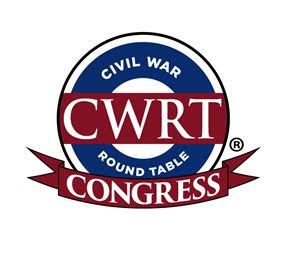How to Attract More Members: The Tried-and-True Methods of the Scottsdale CWRT
 ECW welcomes back Dr. John Bamberl and Carol VanOrnum
ECW welcomes back Dr. John Bamberl and Carol VanOrnum
It was February of 1862 when Col. James H. Carleton’s pro-Union volunteer infantry and cavalry moved to challenge Capt. Sherod Hunter’s 120 Confederate rangers’ mission to claim more territory west of Tucson. On April 15, Lt. James Barrett led just a small patrol to make a peremptory attack upon the Confederates. Fierce combat erupted, lasting over an hour before the Confederates retreated to Tucson.
The remote and unlikely location of this fight near Tucson, Arizona, has become known as the battle of Picacho Peak. And this combat maintains the distinction of being the westernmost battle of the Civil War.
So, too, is the Scottsdale Civil War Round Table, far away from the hub of battlefields in both the Eastern and Western Theaters. Yet, in many ways, Scottsdale has attained a unique leadership role within CWRTs, with just under 400 members.
How can such a western and remote CWRT be that successful?
The Scottsdale CWRT began in the 1990s as a discussion group. By 2000 the Round Table began hosting speakers on a regular basis. Although the meetings are still held in the same venue now as then, the early founders and members felt embarrassed to have 35 members sitting in an auditorium that seated 280. Their organization had no structure to speak of, no Board or committees, and no marketing. So, the group, led by Dr. John Bamberl, got to work. John, who considers himself a better organizer than a historian, knew they needed to aggressively reach out into the community to attract more members.
Here are the tried-and-true methods utilized by the Scottsdale CWRT.
Establish a set of goals:
- To educate the public about the Civil War.
- To attract quality speakers.
- To raise revenue for battlefield preservation.
- To promote the retention of Civil War memory.
- Attract new members by providing financial benefits by incorporating and becoming a non-profit organization (501c3). This enables members to benefit from their tax-deductible payments of dues, contributions, and book sales.
- Create a website with pertinent information about the Round Table along with a printable membership application.
- Reach out to your local library. John’s opening line was, “Hey, we want to work together with you.” He claims it always worked. Working with a library offers an endless number of potential opportunities from sharing online events, providing flyers for distribution, sponsoring Civil War exhibitions, creating speaker events, and more.
- Contact your mayor’s publicist to request help. Advise them of your intent to educate the public and students.
- Contact local newspapers, community newsletters, and free flyers. They’re looking for content and most want to help you. Online groups, such as Next-Door Neighbor, allow you to post events, in particular your meetings, your annual picnic, and your living history events.
- Contact local museums to ask if you can put an article in their newsletter. Make the director an honorary member of your Round Table.
- Contact the superintendent of your local school district to offer a proposal to establish an essay or art contest. Invite the winners to attend your meetings.
- Collaborate with local book stores. Establish a Civil War History Committee meeting to discuss the keynote speaker’s topic. You will attract local historians. Then publish an article in your newsletter to promote the store.
- Ask members to donate books to sell at your meetings. Donate the proceeds to the American Battlefield Trust.
- Contact your inactive members and send them recordings of your meetings. They deserve respect.
- Have a committee of greeters at each meeting to greet guests and hand them a membership packet. Have guests sign a registry to provide their contact information. Then send a welcome email the next day. Add them to your email list. Find that special outgoing person to recruit and coordinate a rotating list of volunteer greeters.
- Call the members who do not renew to inquire why they haven’t renewed. If an adjustment needs to be made by your Round Table to encourage their return, do it.
- Provide a business card to guests and new members and encourage questions – and call them back. Keep the connection alive.
- Use social media to develop a following. This doesn’t happen overnight – but it does work. Keep your Facebook page updated and relevant – get rid of those recipes people keep posting. Replace that old content with current meeting notices. Create a team of Facebook administrators to constantly check the content and add posts.
- Be creative in finding ways to make it easy for members to attend. In Scottsdale, the retirement capital of the West, they provide a bus to pick up and drop off aging members so they can still attend a meeting.
Each of these items takes an effort, planned and implemented. It takes groundwork and good efforts to develop those community contacts. The Scottsdale CWRT emphasizes that you need to be aggressive in your pursuit of your goals. No one is inspired by an email or newsletter message. Of utmost importance, it is the face-to-face personal touch that has worked so well for the Scottsdale CWRT.